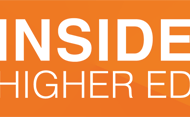Gap Between Online and In-Person Learning Narrows

Inside Higher Ed
Susan D’Agostino
July 13, 2022
When the history of the COVID-19 pandemic is written, one takeaway may be that the crisis marked a positive turning point in which online learning in higher education gained more respect. To be sure, in the early days of the pandemic, few were satisfied with emergency remote instruction, even if teachers displayed “heroic levels of creativity” in the face of a global emergency. But as waves of the virus ebbed and flowed over time and one variant replaced another, faculty members adapted remote learning best practices into their courses. Many students subsequently discovered unexpected benefits in online learning, often leaving them asking for more.
Law students’ perceptions of the gap between online and in-person instruction has narrowed considerably since the start of the pandemic, according to a recent Gallup-AccessLex report. In 2021, approximately three-quarters (76 percent) of law students taking classes mostly or fully in person rated their programs as “excellent” or “good,” whereas only about half (51 percent) taking at least half of their classes online reported the same. Face-to-face student perceptions mostly held steady in 2022, when again approximately three-quarters (78 percent) rated their programs as “excellent” or “good.” But their hybrid and online counterparts made significant gains in 2022; 73 percent of hybrid students and 72 percent of those who were mostly or completely online held those same favorable opinions of their programs.
Online law school is a relatively new phenomenon. Prior to the pandemic, fewer than 10 law schools offered hybrid J.D. programs, according to the report. Back then, law schools accredited by the American Bar Association were only allowed to offer one-third of their credits via distance education. But once COVID-19 turned into a pandemic, the ABA offered temporary permission for then-in-person law schools to offer their programs online—and most followed suit.
In 2021, most students had an unfavorable view of that initial experience transitioning to online learning, according to the report.
“It wasn’t what they signed up for, the sudden loss of in-person contact with their professors and peers was acutely felt, and school administrators and faculty had to adjust to a distance-learning format on the fly,” the report’s authors wrote.
But time heals some wounds, especially when faculty members stepped up to gain proficiency in online teaching best practices. Also, students discovered some advantages to hybrid and online learning, including the flexibility the formats offer.
Continue Reading
Share








